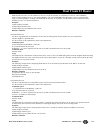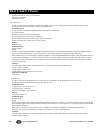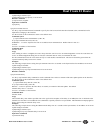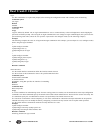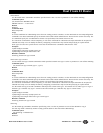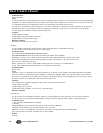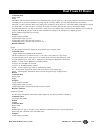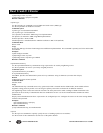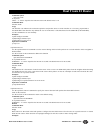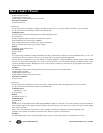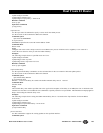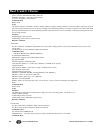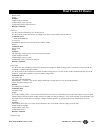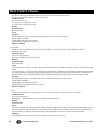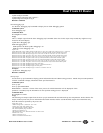
Dual Trunk E1 Router
Dual Trunk E1 Router User’s Guide TECHNICAL: 0118 96 56 000 181
Command Syntax
ospf cost COST
no ospf cost
COST = <1-65535> Specifies the link-state metric.The default value is 10.
Command Mode
Interface mode
Usage
The interface cost indicates the overhead required to send packets across a certain interface. It is inversely proportional to
the bandwidth of that interface. By default, the cost of an interface is calculated based on the bandwidth (108/ bandwidth);
use this command to set cost manually.
Examples
ospfd# configure terminal
ospfd(config)# interface fxp0
ospfd(config-if)# ospf cost 10
Equivalent Commands
ip ospf cost
ospf dead-interval
Use the ospf dead-interval command to set the interval during which no hello packets are received and after which a neighbor is
declared dead.
Use the no form of this command to disable this function
Command Syntax
ospf dead-interval INTERVAL
no ospf dead-interval
INTERVAL= <1-65535> Specifies the interval in seconds. The default interval is 40 seconds
Command Mode
Interface mode
Usage
The dead-interval is the amount of time that the router waits to receive an OSPF hello packet from the neighbor before declaring
the neighbor down. This value is advertised in the router's hello packets. It must be a multiple of hello-interval and be the same
for all routers on a specific network.
Examples
ospfd# configure terminal
ospfd(config)# interface fxp0
ospfd(config-if)# ospf dead-interval 10 10.10.10.50
Equivalent Commands
ip ospf dead-interval
ospf hello-interval
Use the ospf hello-interval command to specify the interval between hello packets that the ZebOS software
sends on the interface.
Use the no form of this command to return to the default setting.
Command Syntax
ospf hello-interval INTERVAL
no ospf hello-interval
INTERVAL= <1-65535> Specifies the interval in seconds. The default interval is 10 seconds.
Default
Command Mode
Interface mode
Usage
Hello-interval is advertised in the hello packets. Configure the same hello-interval for all routers on a specific network. A shorter
hello interval ensures faster detection of topological changes but this also results in more routing traffic.
Examples



